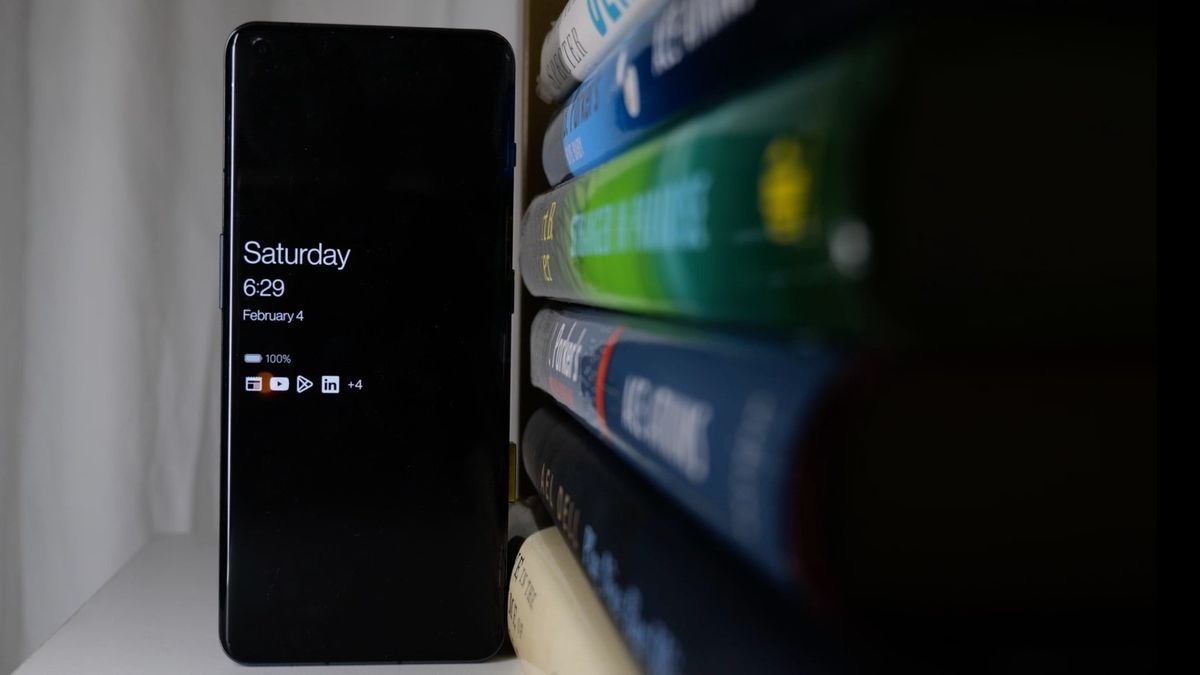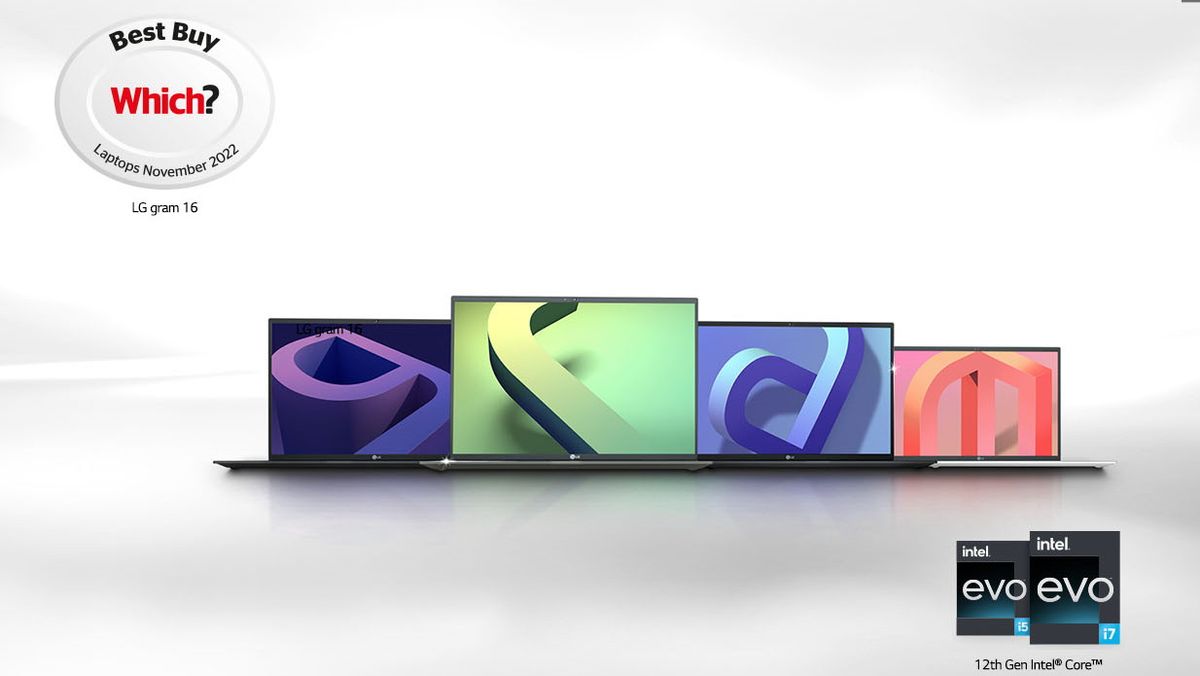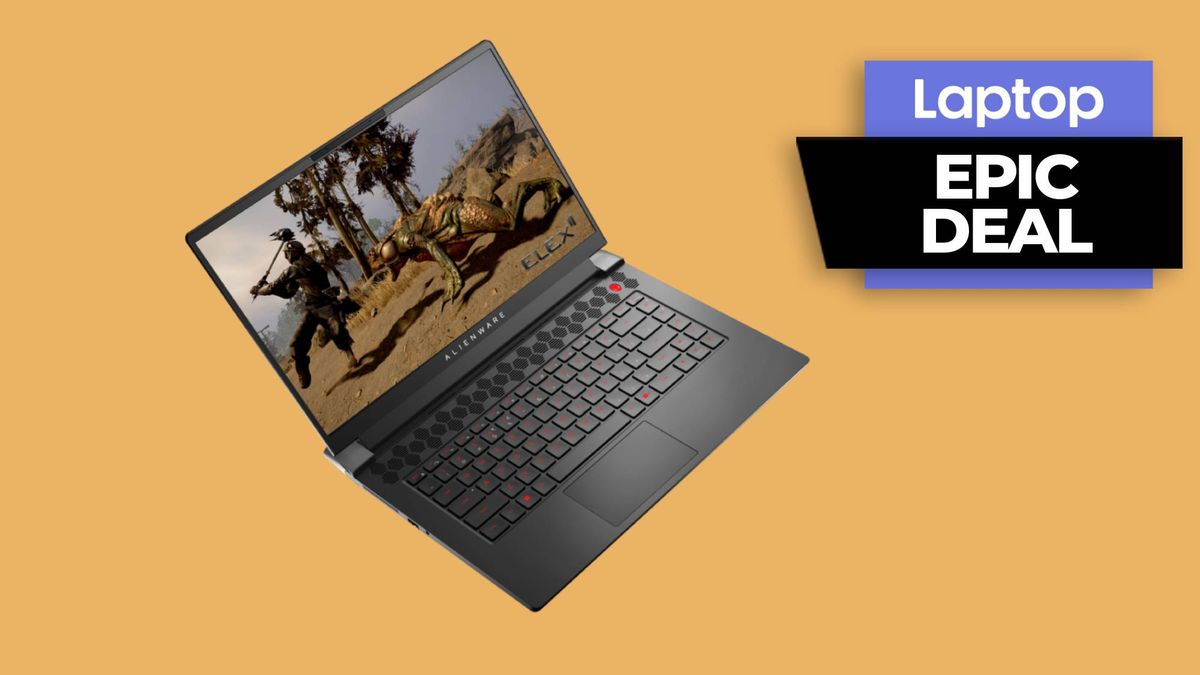The OnePlus motto is “Never Settle,” and the OnePlus 11 delivers on that promise, allowing me to finally retire my iPhone 11. OnePlus didn’t stray far from last year’s winning form factor, which has given us another sturdy, stylish device with potent specs and performance that may have you wondering why you would shell out over a thousand dollars to Samsung or Apple.
OnePlus seems to walk a fine line between delivering flagship specs, performance, and competitive prices that will make many wonder how they’re achieving it all. The OnePlus 11 proves that the company is maturing and belongs in the conversation among the best flagship phones, with its excellent specs, solid performance, and design quality.
However, let’s take a deeper look to see where it will land on our best smartphones list. Dive in and let’s find out if the OnePlus 11 is the phone for you.
OnePlus 11 price and configurations
The OnePlus 11 starts at $699, which includes 8GB of RAM and 128GB of internal storage. Our Titan Black review unit comes with 16GB of RAM and 256GB of storage for $799. The upgraded model is also available in Eternal Green.
I must admit to being a little flummoxed by the pricing of the OnePlus 11. Last year’s OnePlus 10 Pro delivered value with a starting price of $899, but this is taking things to a new level. OnePlus shaved $200 off the price of the OnePlus 11 while still delivering the latest Qualcomm Snapdragon 8 Gen 2 CPU, 8GB of RAM, 128GB of storage, a triple rear camera, an AMOLED LTPO QHD+ display, and fast charging (80W charger is in the box).
If that’s not enough for you, double both your RAM and storage for just another $100 and you are still coming in at the same $799 as the iPhone 14, which lacks a telephoto camera and features a 6.1-inch 60Hz display. Admittedly I’m a fan of the “more bang for your buck” approach, but OnePlus seems to have a whole fireworks factory for your buck in this case.
OnePlus 11 design
Beauty is in the eye of the beholder, but to me, the OnePlus 11 is eye-catching, luxurious, and elegant. Its unibody design is a joy to touch and hold. Its chromed-out stainless steel camera on the rear reminds me of Saturday afternoons spent polishing the chrome on the front grill of my dad’s 1967 Chevy Malibu.
The 11’s beautiful waterfall Corning Gorilla Glass Victus display gently cascades over the edge, smoothly meshing with the curved contours of the device’s aluminum frame. No unsightly notches here. The display dominates the near bezel-less front of the phone, with the selfie cam, tucked into the upper left corner. You still get two unlock options; facial recognition or the under-display fingerprint scanner.
OnePlus keeps its popular slider on the upper right side with the power button just beneath it.
On the left, we find the volume control buttons.

And at the bottom, the sim card slot, USB-C charging port, and mic and speaker ports are seamlessly built into its chromed-out frame.
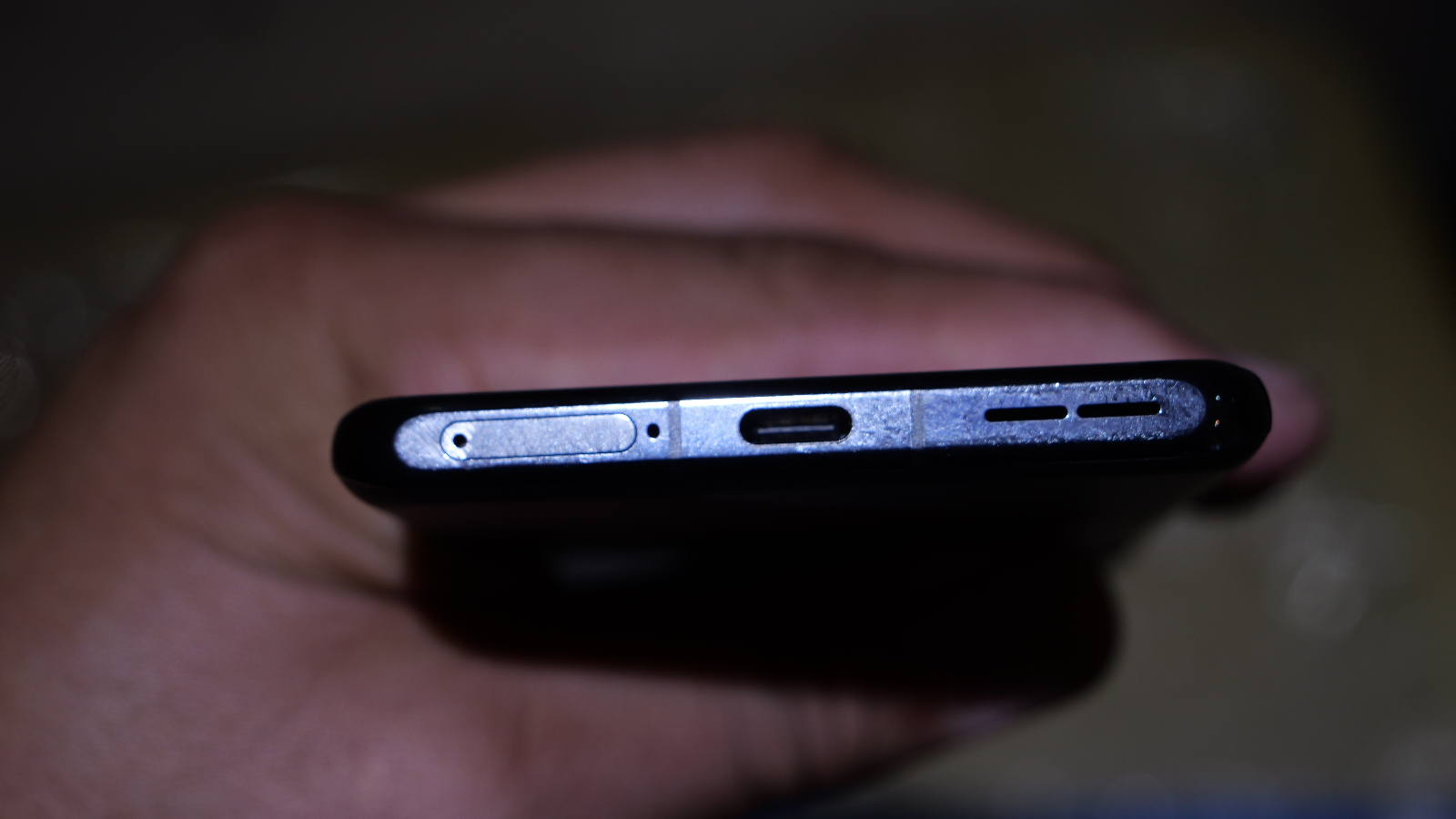
On the rear, we find the camera array finely melded into the body, reminiscent of Samsung’s now abandoned Contour Cut Camera housing. OnePlus has gone to a round camera on the back, previously it was square, it’s a seemingly small change, but contributes to the impeccable aesthetic of the phone.
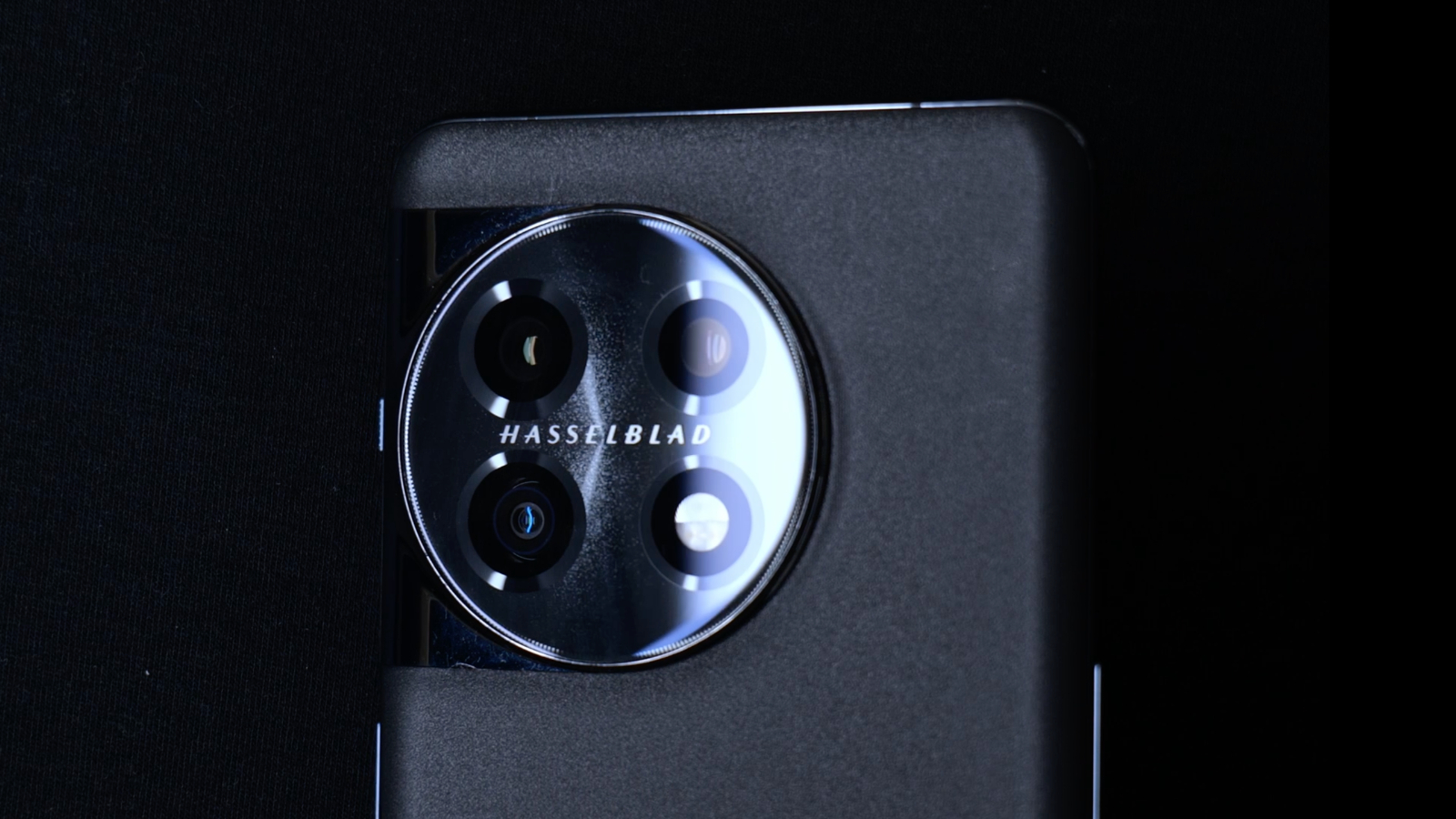
The review unit I received came in Titan Black, with the black chrome aluminum chassis mated to a textured black rear panel that feels luxurious in the hand. The Eternal Green option is available for those who aren’t fans of the black tie/ black dress vibe the Titan gives off.
At 6.4 x 2.9 x 0.33 inches and 7.2 ounces, the 10T measurements are nearly identical to the 10 Pro (6.4 x 2.9 x 0.33 inches, 7.1 ounces), with the only difference being 0.01 of an inch. According to OnePlus, they weigh the same, but if you hold the two in your hands, you can feel a slight difference in weight.
The 11 has a more ergonomic design and feel than the Pixel 7 Pro (6.45 x 3 x 0.35 inches, 7.4 ounces) and is also lighter. The 11 is our comparison group’s lightest member, including the recently released Samsung S23 Ultra 6.4 x 3.1 x 0.35 inches 8.25 ounces.
The OnePlus 11 carries an IP64 rating, this is one cost-cutting measure from OnePlus to hit its aggressive price point, so a splash isn’t going to hurt it, but an accidental dip in the water would be lights out. On the back, it retains the same Corning Gorilla Glass 5 covering. Combined with its aluminum chassis the 11 is sturdy and resilient. It should stand up to the normal abuses most smartphones deal with daily. As we all know, every phone is vulnerable to drops on hard surfaces such as concrete or ceramic tiles, so it would be wise to use a case to protect your investment.
OnePlus 11 display
The OnePlus 11’s AMOLED (3216 x 1440) 6.7-inch display is HDR10+ certified, Dolby Vision capable, with native support for 10-bit color depth, an adaptive 1Hz – 120Hz refresh rate, and a 20.1:9 aspect ratio. Most importantly, it is crisp, colorful, and great to watch content on.
I tapped on my Disney Plus app and started watching Black Panther: Wakanda Forever. The colors were popping off the screen when Angela Bassett, as Queen Ramonda in her resplendent cream and gold dress, faced down Namor in his green shorts and gold and blue jewelry.
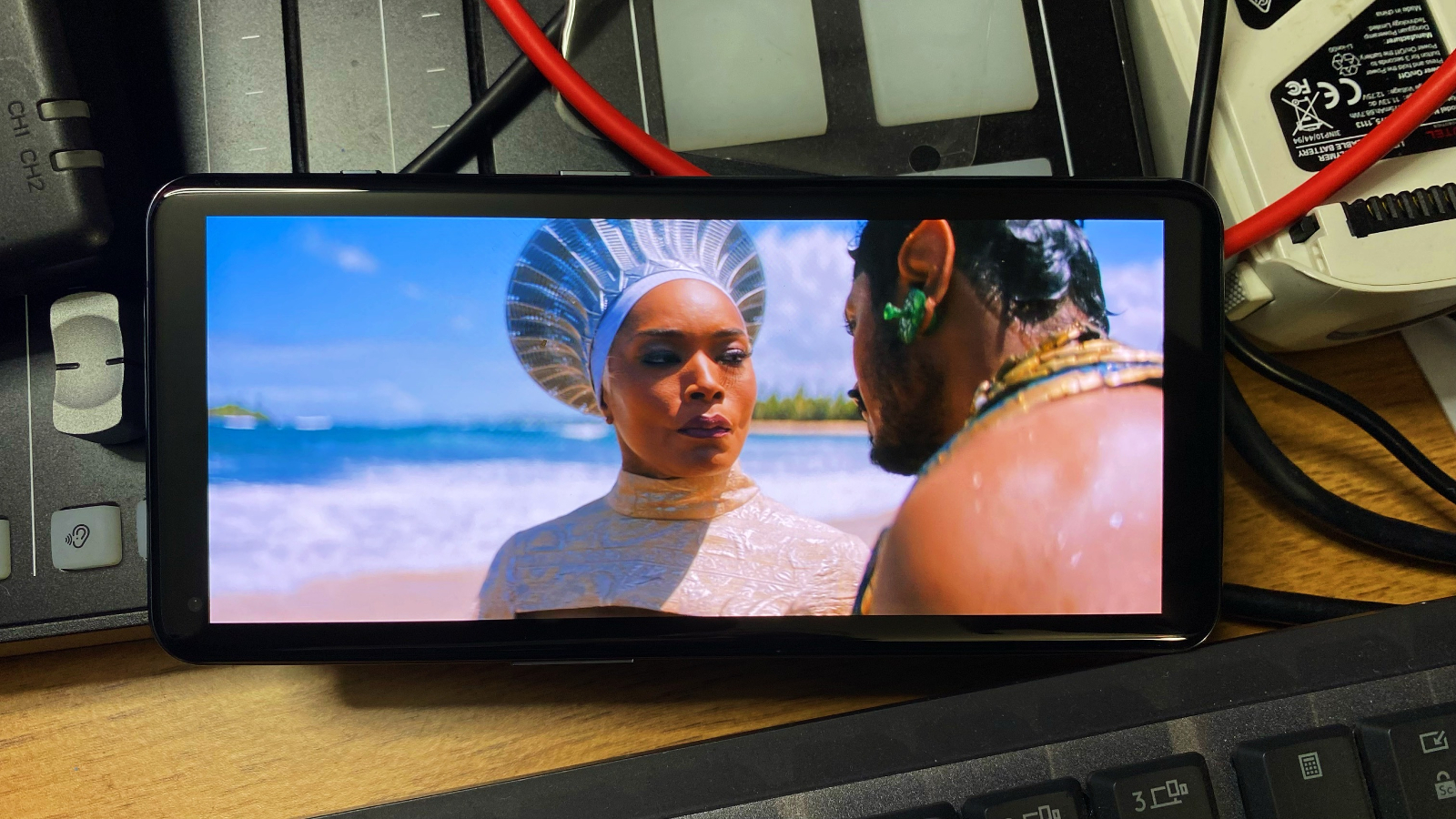
Every color is rendered beautifully with excellent saturation. The video was crisp and clear, remaining smooth through high-octane action with weapon fire and explosions.
Our lab specialist took a deeper look into the OnePlus 11Pro’s display performance. It reproduced 83% of the DCI-P3 color gamut in its Natural color setting and 121.3% in the vivid setting. That’s enough to top the Pixel 7 Pro (74%) and the Samsung Galaxy S23 Ultra (79%) in the natural setting. However, in the vivid setting, the S23 Ultra was king with 136.7%. Vivid is the default option and the one that I and most people tend to use.
During our Delta-E color accuracy test results (lower is better), our 11 scored 0.24 in its Natural setting and 0.31 in vivid. This bested the Galaxy S23 Ultra’s 0.30 in natural and 0.37 in vivid, with the Pixel 7 Pro tallying a Delta-E score of 0.28 in its Natural setting.
I found our 11’s display adjusted well to the surrounding lighting conditions display and was bright enough in every environment that I used it in. However, during our brightness test, it registered a disappointing 470 nits of brightness. This falls well below the premium smartphone average of 873, which both the Galaxy S23 Ultra (1,020) and Pixel 7 Pro (927) easily surpassed.
I found the OnePlus 11’s display to be bright enough that I wouldn’t be concerned with this result, but the numbers are what they are, and the S23 Ultra is king.
OnePlus 11 audio
The OnePlus 11 comes with a Dual Reality Speaker system, noise-canceling mics, and Dolby Atmos support. All my calls sounded clean, loud, and clear, and my daughter told me my voice sounded excellent on the other side without any of the weird noise-canceling muffling you sometimes get with that tech.
I would be remiss if I didn’t mention that while watching Black Panther: Wakanda Forever, I was surprised by not only how loud the dual speakers on the 11 are but also by the audio depth these tiny speakers produced. There are defined tonal differences between high, mid, and low tones. I do not know how that is achieved, but bravo to the engineers behind that. Explosions and special effect audio were also reproduced with nice depth and spatial awareness.
I prefer to use over-ear headphones or wireless earbuds when listening to music; however, I wanted to see if the same audio experience I enjoyed while watching video content would extend to music. I felt like some Latin rhythms, so I put on Celia Cruz’s “Quimbara” as the potent Salsa horns, conga drums, and timbales filled my space with some loud, clean audio worthy of getting up and dancing. However, there was some nice depth when I used the equalizer to push the 11 a bit. However, it’s a smartphone, not a boom box, so that limits the audio experience. I prefer earbuds for this reason.
OnePlus 11 cameras
I’m a camera head. I love cameras, and I like the camera array on the 11 thanks to the latest Snapdragon 8 Gen 2 CPU and Hasselblad fine-tuning, I can report that the overall experience of the 11’s camera has improved in several ways. I immediately noticed how quickly the autofocus works, even when taking multiple objects into consideration. On my 10 Pro I would infrequently experience some lag with the camera, but in almost three weeks with the OnePlus 11 that has never happened.
I took the 11 out immediately to shoot some nighttime photos and found that lowlight performance was improved, and the telephoto was also tweaked a bit. However, I do not recommend going too far past 10x zoom because you will experience pixelation to the point of having unusable photos. You can take some beautiful photos with these cameras if you stay within their limits.
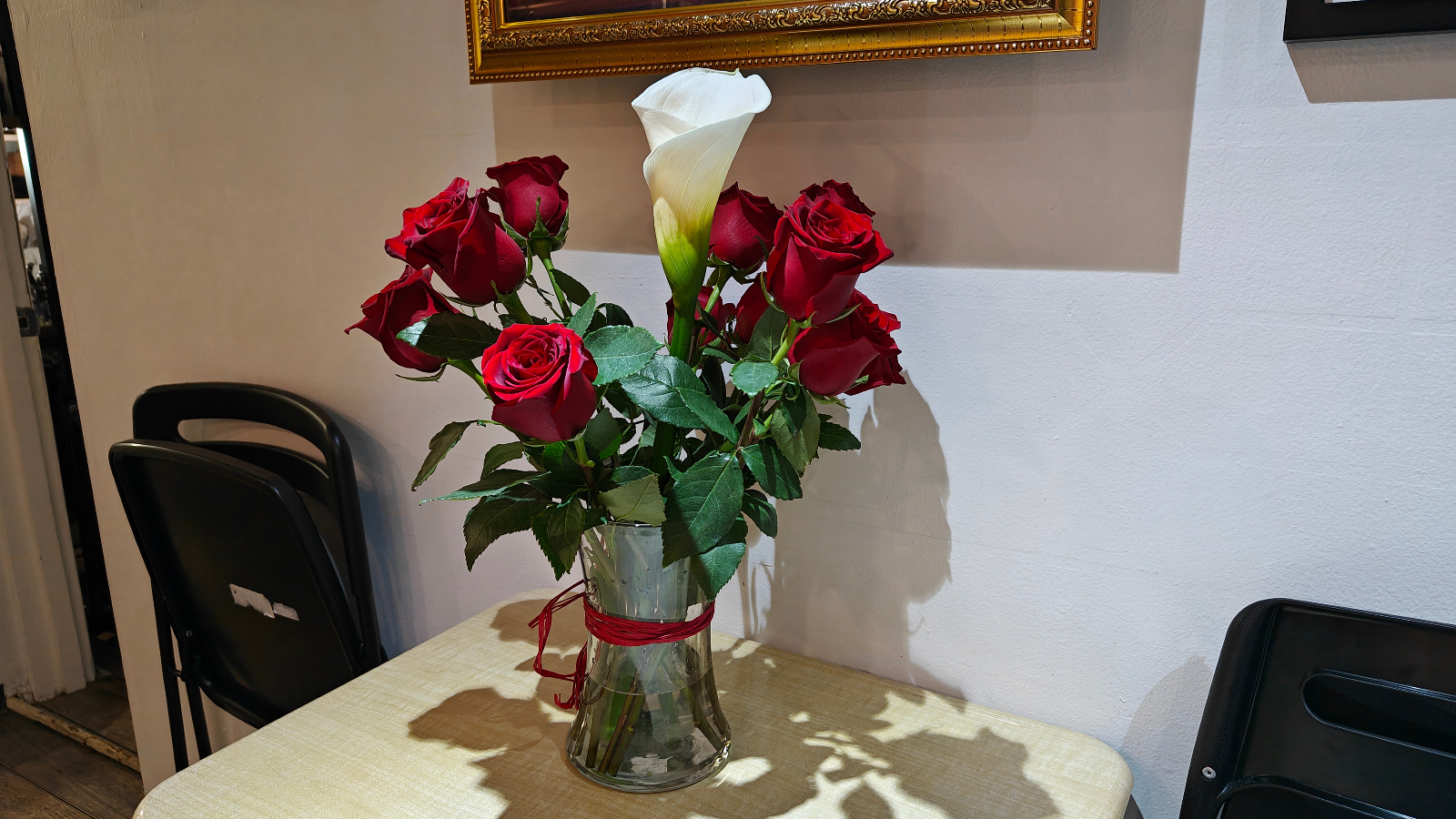
I mean stunning images, thanks to the Hasselblad tuning, which leverages the AI power of the Snapdragon 8 Gen 2 to apply the Hasselblad look to the output of the OnePlus 11 cameras. OnePlus isn’t going to challenge Samsung’s telephoto dominance, but it delivers an excellent overall camera array.
We, as consumers, lose touch with the reality that the cameras on our phones are not on the level of a Nikon Z6 ii or a cinema camera like the Blackmagic 6K. That said, the OnePlus 11’s main 50MP Sony IMX890 1/1.56-inch sensor camera shoots some quality photos that are sharp and colorful. The images may not match those rendered by the Samsung S23 Ultra or the Pixel 7 Pro, but it doesn’t fall far from those industry leaders. I also like all the extra functions you get with the Hasselblad Pro mode and the ability to shoot RAW. While most will not take advantage of those settings, they’re available if you want to use them, and I encourage you to do so. It will take your photos up a notch for sure. However, if you choose to shoot photos in RAW format, remember it will eat up your storage much faster.
The ultrawide camera is 48MP with a 115-degree field of view and an aperture of f/2.2, which performed pretty well under the right lighting conditions and in many lower-light situations.

I tested the 32MP Portrait Tele camera with good results and found images to be sharp, super detailed, and colorful. Lastly, the 32MP selfie camera has also been improved, as it shoots more realistic images without oversaturating, as some front-facing cameras do.
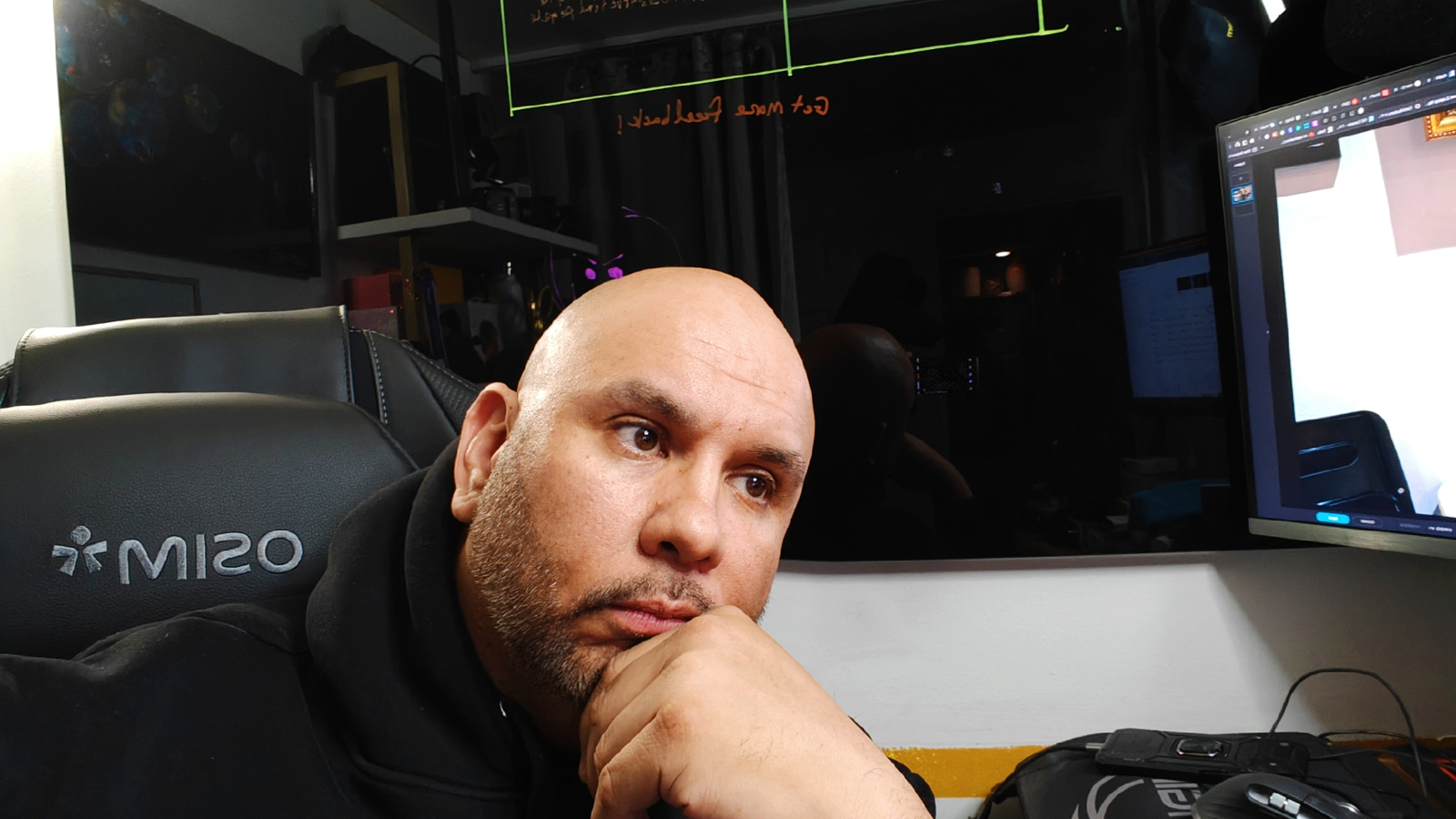
The autofocus was fast, and I got clean, sharp images every time. To be honest, I had issues with the 10 pro from time to time as it seemed to want to overcompensate often in some lighting situations. Also, whatever OnePlus did, they corrected skin color reproduction in images taken with the selfie camera. I noticed on the 10 Pro that sometimes my selfie photos were way off in skin tone, making those images unusable, but it’s been fixed, so thank you.
The OnePlus 11 can shoot video in resolutions from 720p to 8K. 8K is overkill, and although it’s a nice feature to have, most will not use it. It does shoot excellent 4K videos at 30 or 60 frames per second, some fun slow motion at 240 fps at 1080p, and ultra slow-mo in 720 at up to 480 fps.
The camera’s feature set is jam-packed with Night Mode, Portrait Mode, Pro Mode, Panorama Long Exposure, and Dual-View Video, and it has a macro mode that you can leave on auto or select manually.
OnePlus 11 performance and graphics
Our OnePlus 11 review unit features the latest Snapdragon 8 Gen 2 processor, 16GB of RAM, and 256GB of storage, which places it in the range of the higher-priced flagship Android phones. How OnePlus continues to land in the flagship market while keeping prices more affordable makes me happy but leaves me curious about how.
The 11 never fluttered, faltered, or appeared overwhelmed with anything I threw at it. I popped open about 30 Google Chrome tabs and a Disney Plus video playing in the background, all while bouncing around apps like Instagram, Facebook, and Twitter. I found Qualcomm’s Snapdragon to be more than up to the task, as the 11 was super responsive throughout. It was like having a smartphone powered by an Arc reactor.
Like the 10 Pro, the 11 has its own beautiful 120Hz display. Combined with OnePlus’s HyperBoost Gaming Engine, GPA Frame Stabilizer, and GPU load control (GLC), it takes your gaming to a whole new level and results in one of the smoothest gaming experiences I’ve had to date. I played Modern Combat 5 (opens in new tab) on it, and it was a blast while averaging 29 fps.
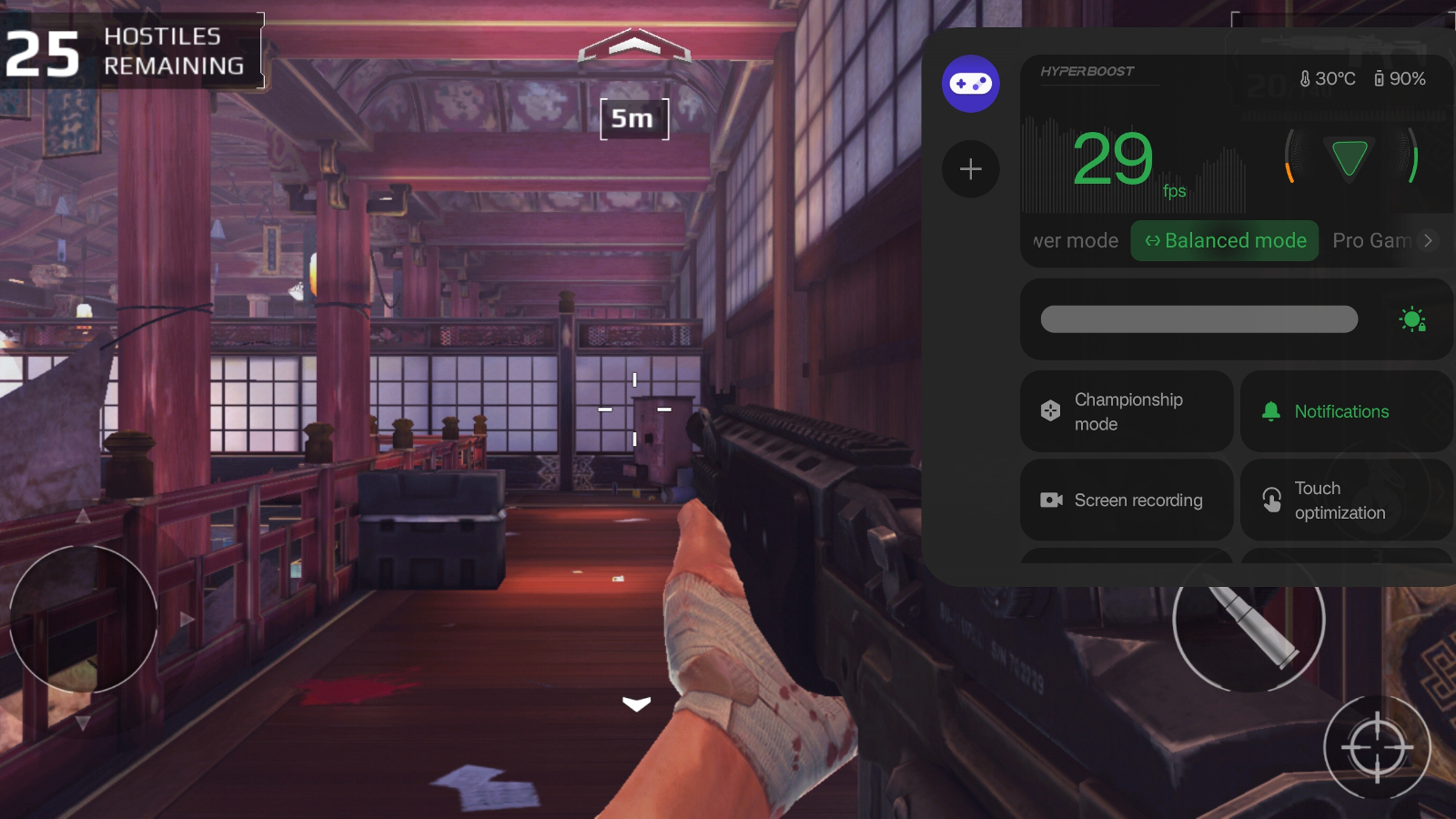
I also played the less thumb challenging Angry Birds 2 and averaged 60 fps while giving my thumbs a rest whilst slaughtering the evil pigs.
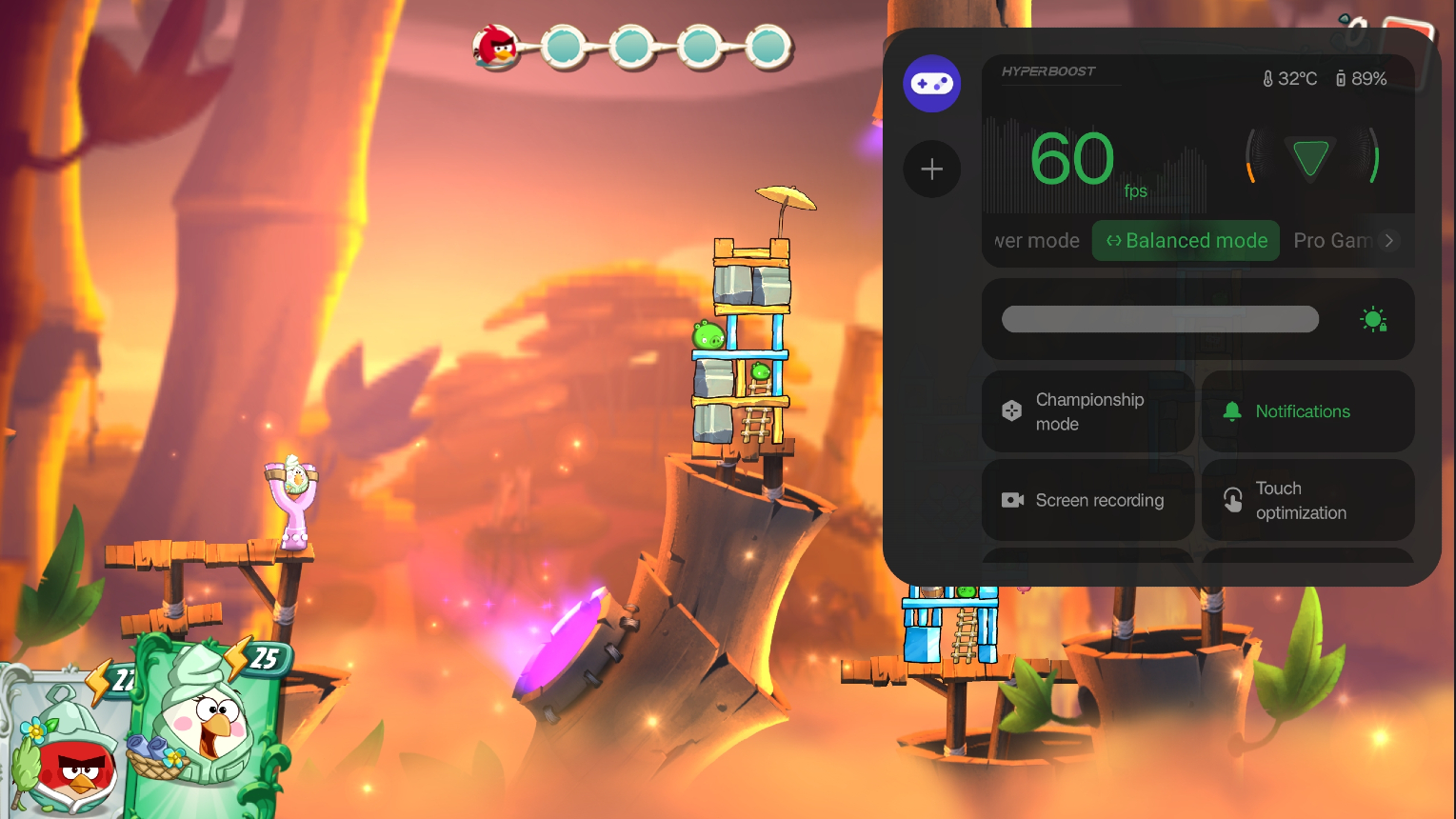
Our review unit scored solidly during our Geekbench 5 benchmark, as the Snapdragon 8 Gen 2 tallied a multi-core score of 4,962. The smartphone average is 3,620, so it easily surpassed that. However, the leader of our group was the Samsung S23 Ultra which shares a specially designed version of the same Snapdragon 8 Gen 2 and scored 5,081 during our benchmark. The Pixel 7 Pro closed us out with 3,046 thanks to its Google-made Tensor G2 CPU.
I expected our OnePlus 11 to devour the Adobe Rush benchmark, but oddly it fell below the smartphone average of 54 seconds and tallied 1 minute and 11 seconds. Samsung led our group with 39 seconds, with the Pixel 7 Pro posting a solid 48 seconds.
During our Wildlife Unlimited Graphics testing, the 11 scored 14,089, surpassing the average of 6,952. The Samsung Galaxy S23 Ultra surpassed the 11, but not by much, tallying 14,611. The 7 Pro rounded things out just below the smartphone average at 6,725.
During our Expedition benchmark, the OnePlus 11 averaged 38 frames per second, surpassing the category average of 33. The S23 Ultra led our group averaging 39 frames per second, followed by the Pixel 7 Pro, which averaged 22 frames per second.
The 11 scored well in most categories and ran with the Samsung S23 Ultra, but that Adobe Rush score is a bit strange.
OnePlus 11 battery life and charging
OnePlus is known for pushing the limits of fast charging, and they’ve done it again. The OnePlus 11 comes with a 5,000 mAh dual-cell battery that supports up to 80W SUPERVOOC charging and an 80W SUPERVOOC charger (there are rules in North America). According to OnePlus, it can fully charge the 11 in 27 minutes. During our lab testing, we got 57% charge in 15 minutes and reached full charge in 30 minutes.
I used a timer on five occasions to see what numbers I would get. Interestingly enough, twice I went from 0% to 100% in 22 minutes, two times in 27 minutes, and the final time it took 25 minutes and 37 seconds. I was bored, don’t judge me. All of that to say you can charge this phone from completely dead to full in under 30 mins and get back to your day, which is appreciated. I also noticed the phone never got warm or hot during fast charging, and maybe that’s thanks to the new cryo cooling system. I don’t know how these wizards do their magic.
During our Laptop Mag Battery test, which has the phone continuously surf the web over 5G with the display set to 150 nits of brightness, the OnePlus 11, on its adaptive refresh rate setting, averaged 12 hours and 48 minutes at 60 Hz refresh rate. When we switched the display to its adaptive 120Hz, we saw battery life extend to 13 hours and 10 minutes. Both are longer than the smartphone average of 9 hours and 49 minutes. The Galaxy S23 Ultra scored 13 hours and 9 minutes in 60Hz mode, but 12 hours and 22 minutes in its adaptive 120Hz mode. The Pixel 7 Pro lasted 8 hours and 5 mins with adaptive refresh on and 7 hours and 56 minutes with it off. This is a win for the OnePlus 11, but just by a hair.
The OnePlus 11 will end up on our phones with the best battery life, for sure, and I literally had to work with my managing editor Sean Riley on way to burn out the battery on one occasion because although I had gone over three days without charging it, (only using it for 5+ hours of screen time), it refused to die. Nicely done OnePlus.
OnePlus 11 software
The 11 arrives with OxygenOS 13, a lightly-skinned version of Android 13. It is one of my favorite Android skins.

The UI is user-friendly, with OxygenOS 13 featuring an “Aquamorphic” design that tends to create a more soothing and tranquil user experience while keeping users’ favorite features such as Work-Life Balance, the improved Smart Launcher, a Sidebar Toolbox, Faster Bluetooth pairing, Spatial Audio, and Private Safe 2.0 to secure user’s data further.
OnePlus now matches Samsung with its software update pledge of four major OS versions and five years of security updates. We would still like to see OnePlus deliver those updates faster, but it’s great to see the commitment to long-term device support.
Bottom line
Starting at just $699 for the base model with 8GB of RAM and 128GB of storage, the OnePlus 11 is a steal, and even if you bump things up to 16GB of RAM and 256Gb of storage, the $799 cost remains below many other flagship phones with comparable (or worse) specs. However, there is currently no 512GB or 1TB option, which is disappointing for a phone as capable of this, but that would likely push the price past $1,000.
OnePlus is delivering a lot of smartphone for under $800, especially with its Snapdragon 8 Gen 2 processor. An affordable flagship with this kind of performance that also shoots solid photos and video is a steal. Typically in this price range if you are getting the current Snapdragon CPU, you are looking at a gaming phone that may as well just have camera lens stickers on the back.
While it is clear that OnePlus is making some cuts to hit its price point, they are well chosen. The camera hardware isn’t flagship tier to match the Galaxy S23 Ultra or Pixel 7 Pro, but they are solid and paired with the Hasselblad tuning can deliver great results. The lack of an IP rating may bother some, or the use of Gorilla Glass Victus and Gorilla Glass 5 versus Victus 2 on Samsung’s latest, but it remains a durable phone that should hold up well to the rigors of daily use.
Overall when factoring in the incredible sub-$800 price point the OnePlus 11 is one of the best flagship phones you can buy, and it can do it all.

